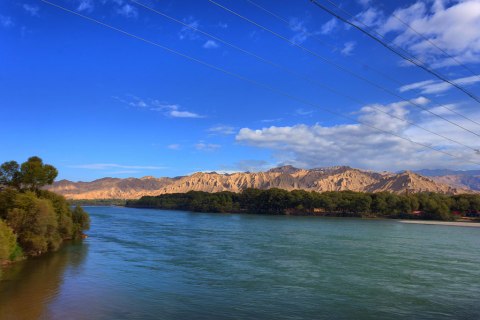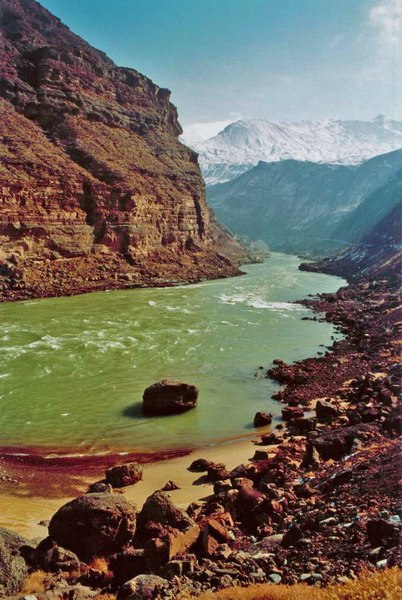RESIDENTS OF EASTERN TIBET FACE THEIR WATER SUPPLY BEING DIVERTED
 Provincial authorities plan to divert the Yellow River away from Amdo and towards the city of Xining
Provincial authorities plan to divert the Yellow River away from Amdo and towards the city of Xining
Tibetans in Tibet’s Amdo region face the possibility of their water supply being diverted under plans to change the course of the Machu River.
The Qinghai Provincial Government is launching the extensive project, which was set up in September this year. The official planning committee of the project, which is named ‘Water Diversion and Infrastructure of the Western Development Program’ , states that the main objective is to meet the growing demands for water in the area around the city of Xining, the capital of Qinghai Province.
The Machu, otherwise known as the Yellow River, is one of the biggest and most vital rivers in the region. Its source is found in Amdo and its stream runs through large parts of Tibet and China before flowing into the South China Sea.
The government claims that this project has been reviewed by experts and has been assessed as ecologically sustainable. Leknying, the Vice Secretary of the Communist party of Qinghai Province has even argued that this is the first ever national river diversion project to provide biodiversity conservation and sustainable development, oriented towards enhancing people’s livelihoods in the area.
Despite these claims, previous diversionoperations in Tibetan areas have adversly affected the local population.  The planned Machu diversion will affect primarily Tibetan communities in Amdo, depriving them of their source of clean drinking water. The proposed new route of the river is towards Xining, the capital city of Qianghi province which has a total population of 2.3 million, out of which only 100,000 are Tibetan.
The planned Machu diversion will affect primarily Tibetan communities in Amdo, depriving them of their source of clean drinking water. The proposed new route of the river is towards Xining, the capital city of Qianghi province which has a total population of 2.3 million, out of which only 100,000 are Tibetan.
This is the second instance in less than a month in which Free Tibet has reported on Tibetan communities facing being stripped of their water supply, in violation of their basic rights to access clean drinking water and administer their natural resources.
In recent years, the river diversion projects have been accelerating and expanding on a large scale. China’s massive south-to-north water transfer highlights the issue of uneven access to resources and a complete lack of control over decision-making practices.
The Machu, Drichu (or Tongtian) and Zachu (or Mekong) rivers –the three most prominent rivers in Tibet – have over the past years been subjected to mass alterations, diversions and excavations as they became China’s main supplies of hydro-electric power. The construction of hydro dams to meet the increasing electricity demands of distant Chinese cities has often come at the expense of the local Tibetan population.
 The associated mining, development and dam construction projects are directly linked to the increased occurrences of natural disasters including earthquakes, landslide and flooding. Consequently, people residing in the river’s surrounding areas are particularly at risk.
The associated mining, development and dam construction projects are directly linked to the increased occurrences of natural disasters including earthquakes, landslide and flooding. Consequently, people residing in the river’s surrounding areas are particularly at risk.
Alongside environmental degradation, pollution and disruption of the unique ecosystems triggered by the hydro-dam projects, forced relocations and evacuations of local communities are widespread. Earlier this week, Free Tibet reported on the situation in Chamdo, where over 30,000 Tibetans had to be evacuated due to the continuous flooding of the area.
In recent years, China’s exploitation of Tibet’s natural resources has gathered pace significantly. While China is using Tibet’s environment and resources to sustain its rising industrial demands, Tibetans are unable to protect their land and are the first ones to suffer the consequences of the environmental degradation.
source:https://www.freetibet.org


comment 0